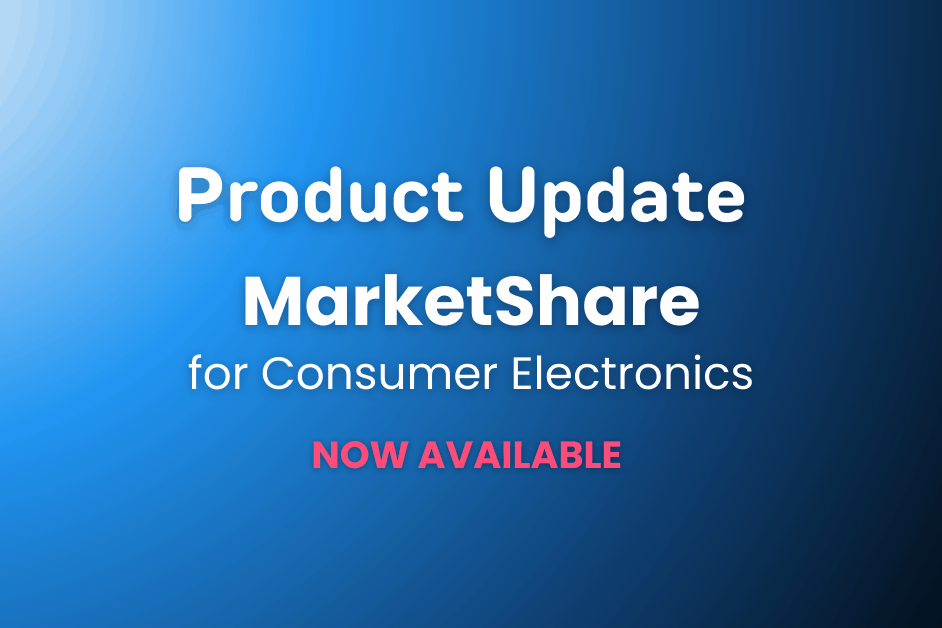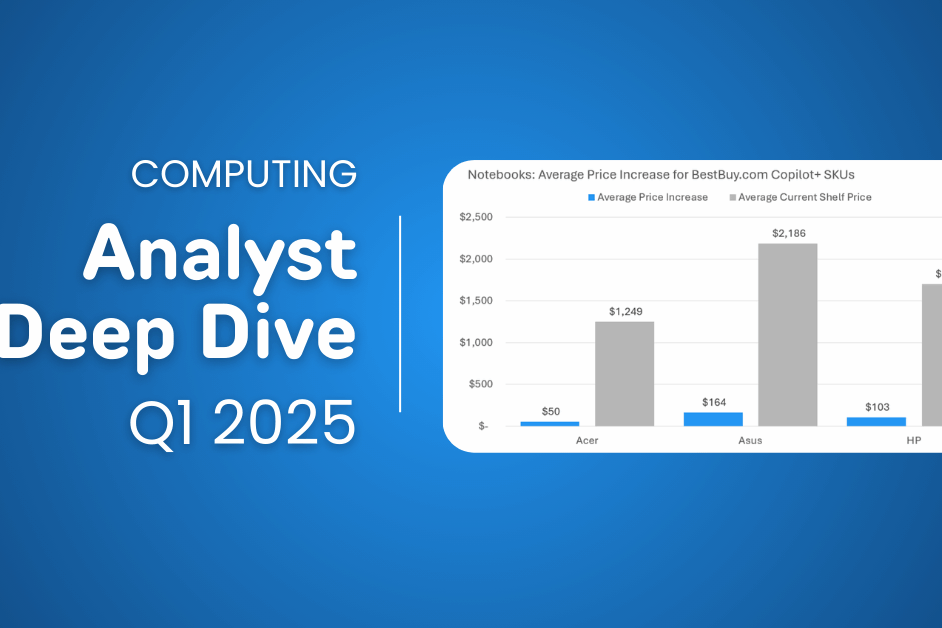Do you remember your first computer? It was probably a very different machine than the computers available today. Long gone are the days when a computer took up the whole room—or even just had a dedicated “computer room”—now they are compact, portable, and extremely powerful despite their more diminutive size. These evolutionary shifts have occurred due to new products, new features, and new price points hitting the computer market over the past several years. Computing has splintered into three primary branches in the last decade or so, with three main formats rising to the top: Desktops, Laptops, and Tablets (Smartphones will be excluded from our summary, though in many ways they are consumers’ primary computer these days).
Computer Market: Desktops Still Have A Role to Play
Looking at form-factor alone, you can see how much the computer industry has shifted. Where once Desktop computers were what consumers thought of when you said “computer”, they now make up just under 16 percent of the total computer market. Their percentage of the sales mix has remained relatively flat over the past few years, with only a slight increase in the last year or so.
Pricing Still Depends on Your Computer’s Job
Desktops are sold across a wide variety of price points, which largely depend on what components go inside the computer, which is in turn usually selected based on what the computer will be used for. So, while the average price paid for desktops in the current computer market is $708, there can be options that cost significantly more. For example, for an Apple brand desktop computer, which is usually aimed at creative professionals who require lots of memory to run intensive programs, buyers pay an average of $1202. Alienware, which makes computers targeted towards gamers (who also need high grade parts in order to run the latest and greatest video games) has an average price of $1370. Other desktop manufacturers, like Samsung or Acer, can both be purchased for an average price of less than $500, though they will not have the same capabilities of more expensive desktops with higher specs.
Windows Is Still King
By and large, much like their smaller laptop siblings, these desktops run Windows. In fact, more than one in four desktops run Windows 10. A smaller subset of desktops run Windows 7 or 8, but support for those operating systems are waning. MacOS desktops make up about 11% of the computer market mix.
Computer Market: Laptops Reign Supreme
Laptop or Notebook computers account for nearly 49 percent of computer purchases, as reported by TraQline in 2019. New technology has opened the door for the laptop industry making them better equipped with more powerful processors, memories, and hard drives, as well as things like discrete graphics cards that they may not have had before. These upgrades allow laptops to handle more intensive programs such as Photoshop or Overwatch. In many cases, laptops are often able to fill in for purposes previously relegated to desktops. Consumers can use laptops as their primary computer instead of needing to have two separate computers- one desktop that’s been beefed up to run those massive programs and games and a second computer, a lighter, portable version – fit mainly for browsing the web, doing basic word processing, or streaming a video online.
A Price Point for Every Buyer
Much like desktops though, when it comes to cost for laptops, there’s a wide variety of prices for different brands of laptops across the entire computer market. For the laptop market overall, the average price is $572. Again, like desktops, the average price consumers pay in the laptop market will largely depend on what sort of specifications they are interested in, what they intend to use the computer for, and what OS is installed on the laptop. Given the difference in minimum hardware requirements to run certain Operating Systems, it is not surprising to see a price disparity between workhorse laptops running MacOS ($1030 on average) and “Lite” operating systems like Chrome OS ($283). But a Chromebook’s low price is only compelling to a small percentage of consumers. Systems fitted with ChromeOS, make up 12% of laptops sold (Source: TraQline, 4QE September 2019). While 12 percent of all units sold might seem low, the data shows its share steadily and significantly increasing over the last three years. In fact, ChromeOS has nearly doubled its share of the laptop market since 2017. When reviewing the total computer market – from desktops to laptops (the OS isn’t used on tablets), ChromeOS only accounts for 6 percent of computers. But even at 6 percent, they are still able to gain share, especially as the features they incorporate are becoming more sophisticated, while still maintaining a low overall cost. As consumers and the industry become more comfortable with cloud-based storage, as well as more features like long battery life and quick booting make their way to Chromebooks, they will have further opportunity to grow their overall share in the computer industry.
A David vs Goliath Situation
As ChromeOS continues to fight for share and move the needle, Windows 10 still dominates the OS world as the top choice on most laptops (63%). MacOS sits in second place, being used on 15 percent of laptops. One advantage Windows has over Mac is the wide variety of brands and models of laptops available that run Windows OS. While many manufacturers license Windows in order to have it pre-installed on their computers, MacOS is found almost exclusively on computers manufactured by Apple. Someone who would like to invest in the MacOS system would have to be prepared to spend a significant amount of money on their new laptop, whereas Windows can be found on laptops across a variety of price points.
Computer Market: Tablets- Somewhere in the Middle
Tablets or e-readers still make up 31 percent of the market, but Tablets have lost significant share of the computing category overall in the last four years. Apple dominates tablets with 35 percent of the market and continues to defend their title against Amazon’s Fire Tablet & Kindle e-readers which hold 29 percent share combined. Interestingly, the Kindle brand itself is losing ground and has fallen significantly among the tablet/e-readers. Samsung holds a distant third with 17 percent of the Tablet share. Tablets have not taken off quite like they were once predicted to do. Or rather, there has been a shift in how tablets are advertised. Companies like Apple are positioning their tablets as replacements for laptops, rather than ancillary screens used for playing games, reading, or streaming media. Despite this, in the last year most consumers report purchasing a tablet for entertainment (62% – TraQline), rather than work or education.
Conclusion
The computer scene is still capable of surprises. A decade ago, you would be hard-pressed to have predicted the growing trend of tablets repositioning themselves as computer replacements, or two-in-one designs that hybridize both laptops and tablets (e.g. Microsoft’s Surface Pro line). While typical clamshell-type laptops remain consumers’ top choices for now, it’s easy to see a future in which the lines between laptops, desktops, and tablets are further blurred.
Related blogs
Prime Day 2025 for Durables: Shopper Intent, Promotions & Where to Focus
Prime Day 2025 broke the mold. For the first time, Prime Day ran four full days, spanning July 8–11, twice the usual length, and emerged as Amazon’s…
Related blogs
Prime Big Deal Days Trends 2025: Durables Shopper Intent & Promotions
From Prime Day in July to Prime Big Deal Days in the Fall and Amazon’s sales during Black Friday…
OpenBrand Brings Modeled Market Share Data to Consumer Electronics
We are excited to announce the expansion of OpenBrand’s unparalleled modeled market share data into…
2025 Retail Pricing Strategies Unpacked: Data-Backed Trends in Appliances, Electronics, and More
Trends in Bloom Webinar: Analyst Insights on Retail Pricing Strategies & Promotions…
Navigating the Tariff Disruption: Strategic Insights for PC Brands and Retailers
In early 2025, gaming PCs and Copilot+ PCs became the first segments of the consumer PC channel to…





